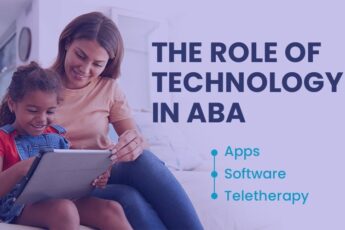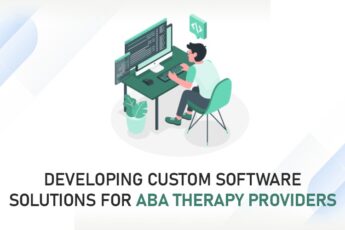The COVID-19 pandemic has brought about a vast change in the functioning of clinical trials. People are now readily adopting technologies in their healthcare routine. The IT sector has successfully recognized the necessity for technical advancements, leading to the introduction of evolving technologies. One such revolutionary change is the introduction of IoT in research. Through this blog, we will try to understand Clinical trials, the benefits of using IoT in clinical trials, and the challenges faced in integrating IoT.
Understanding Clinical Trials and the shift from its traditional approach
Clinical trials are research conducted to test the effectiveness of a particular test, treatment, or medicine on human health. The study includes testing medical interventions such as a drug or test on volunteers and recording the response of the outcome to determine if the induced intervention is safe for use. Clinical trials have been a long and exhaustive process. A volunteer requires regular clinic visits, participates in data collection, and spends tremendous time on the same. The traditional approach to clinical trials became a concern as it is time-consuming, and there was room for human error. A decline was noticed in the number of volunteers during the pandemic, as regular clinic visits became a hurdle for volunteers. A shift from the traditional approach was the need of the hour, and healthcare providers introduced IoT in clinical trials.
Understanding IoT in a Nutshell
IoT, or Internet of Things, refers to a network of connected devices. This network facilitates communication within devices and allows data sharing with each other. The advent of technology has resulted in the creation of inexpensive chips and easier telecommunications, thus connecting almost every device to the internet. These devices can range from a toothbrush to complex machines required in medical care. The magic of IoT is visible when these devices improve the working of fields like medical science.
Enter IoT: Integrating in Clinical Trials
To overcome the challenges faced while conducting clinical trials traditionally, it became essential to bring about a technical approach to it. The transformation brought about was none other than IoT, as it could create a network to connect machines, doctors, and volunteers. Using IoT in clinical trials includes a web of smart devices, wearables, and sensors. These devices collect and store real-time data from the patients. The integration of IoT into clinical trials has brought about a significant impact on healthcare.
Real-Time Monitoring
IoT has enabled researchers to collect and monitor data of patients globally, using devices such as wearables, sensors, and fitness trackers. The continuous collection of data helps the professionals to detect any adverse effects from the trial instantly.
Enhanced Data Accuracy
The traditional approach requires manual data entry, which is prone to errors. IoT devices eliminate this issue by automating data collection. Professionals use IoT in every stage, from measuring vital signs to tracking the effects of medicine. The accuracy and reliability of the data collected during clinical trials have significantly improved, thus leading to precise results and better-informed decisions.
Improved Patient Engagement
Traditionally, patient engagement in clinical trials has been a challenge. IoT fosters better communication between patients and researchers as it allows remote monitoring. Wearable devices can remind patients of appointments, medication schedules, and lifestyle adjustments, thus enhancing adherence and participation.
Remote Patient Participation
Traditionally, patients had to travel long distances to participate in clinical trials, reducing the number of participants. With IoT, patients can contribute to research from their homes’ comfort. With the involvement of IoT, the trials have become more accessible, and the number of participants has increased over time.
Cost-Effective Clinical Trials
The traditional approach to clinical trials can incur substantial costs associated with site visits, data collection, and monitoring. Integrating IoT technologies can significantly reduce these costs by minimizing the need for physical infrastructure and human resources.
Additionally, the efficiency gains achieved through real-time monitoring and automated data collection result in shorter trial durations. It accelerates the time-to-market for new treatments and reduces the financial burden on research institutions and sponsors.

Overcoming Challenges
While IoT is beneficial for clinical trials, it’s crucial to address the challenges brought by the technological shift:
- Data Security and Privacy: The increased use of connected devices requires robust security measures. Ensuring the privacy and security of patient data is important. Implementing encryption protocols and strict access controls are essential to safeguard sensitive information.
- Interoperability: The variety of IoT devices available poses an interoperability challenge. Healthcare bodies should establish industry-wide standards for seamless integration and data exchange. These standards will ensure that different devices can communicate and share data effectively.
- Regulatory Compliance: The healthcare industry is highly regulated, and adopting new technologies can be difficult. Establishing clear guidelines for using IoT in clinical trials is vital to ensure ethical practices and the safety of participants.
The Future of Clinical Trials
As we stand at the intersection of healthcare and technology, the future of clinical trials looks promising with the integration of IoT. The ability to gather real-time, accurate data, coupled with improved patient engagement, has reshaped the approach to medical intervention.
The benefits extend beyond efficiency and accuracy. By streamlining the clinical trial process, IoT has the potential to accelerate the development of new treatments and medications. These advancements in technologies not only benefit researchers but, more importantly, have a positive impact on patients eagerly awaiting innovative solutions.
Conclusion
In conclusion, the integration of the IoT in clinical trials is proof of the ongoing evolution of healthcare. The advantages of real-time monitoring, enhanced data accuracy, improved patient engagement, and remote participation have transformed our approach to medical science.
Talk to our experts and find out more about the latest IoT advancements. You can find out how the DIBS team can help to integrate these IoT devices into your clinical trial plans. By using these devices, you will subsequently be able to conduct the trial efficiently.







Leave a Comment